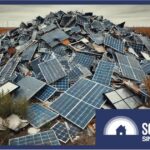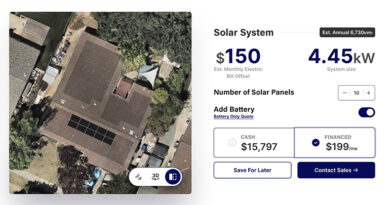NREL report advocates for greater R&D in solar module recycling
Researchers at the National Renewable Energy Laboratory (NREL) have conducted a global assessment into the most promising approaches to end-of-life management for solar photovoltaic modules.
PV modules have a 30-year lifespan, with no current plan for how to manage end-of-life disposal. The volume of modules no longer needed could total 80 million metric tons by 2050.
In addition to quantity, the nature of the waste also poses challenges. PV modules are made of valuable, precious, critical and toxic materials. There is currently no standard for how to recycle the valuable ones and mitigate the toxic ones.
“PV is a major part of the energy transition,” said Garvin Heath, a senior scientist at NREL who specializes in sustainability science. “We must be good stewards of these materials and develop a circular economy for PV modules.”
Heath is lead author of “Research and development priorities for silicon photovoltaic module recycling supporting a circular economy,” which appears in the journal Nature Energy. His co-authors from NREL are Timothy Silverman, Michael Kempe, Michael Deceglie and Teresa Barnes; and former NREL colleagues Tim Remo and Hao Cui. The team also collaborated with outside experts, particularly in solar manufacturing.
“It provides a succinct, in-depth synthesis of where we should and should not steer our focus as researchers, investors, and policymakers,” Heath said.
The authors focused on the recycling of crystalline silicon, a material used in more than 90% of installed PV systems in a purified form. It accounts for about half of the energy, carbon footprint and cost to produce PV modules, but only a small portion of their mass. Silicon’s value is determined by its purity.
“It takes a lot of investment to make silicon pure,” said Silverman, PV hardware expert. “For a PV module, you take these silicon cells, seal them up in a weatherproof package where they’re touching other materials, and wait 20 to 30 years — all the while, PV technology is improving. How can we get back that energy and material investment in the best way for the environment?”
Currently, one crystalline silicon PV-dedicated recycling facility exists in the world.
Based on their findings, the authors recommend research and development to reduce recycling costs and environmental impacts, while maximizing material recovery. They suggest focusing on high-value silicon versus intact silicon wafers. The latter has been touted as achievable, but silicon wafers often crack and would not likely meet today’s exacting standards to enable direct reuse.
The report highlights the need for research and development on purification processes to recover high-value silicon. The authors emphasize that the environmental and economic impacts of recycling practices should be explored using techno-economic analyses and life-cycle assessments.
Finally, the authors note that finding ways to avoid waste to begin with is an important part of the equation, including how to make solar panels last longer, use materials more effectively, and produce electricity more efficiently.
“We need research and development because the accumulation of waste will sneak up on us,” Silverman said. “Much like the exponential growth of PV installations, it will seem to move slowly and then rapidly accelerate. By the time there’s enough waste to open a PV-dedicated facility, we need to have already studied the proper process.”
If successful, these findings could contribute one piece of a PV circular economy. The U.S. Department of Energy’s Solar Energy Technologies Office funded the analysis.
News item from NREL
Original Source: https://www.solarpowerworldonline.com/2020/07/nrel-report-advocates-for-greater-rd-in-solar-module-recycling/











